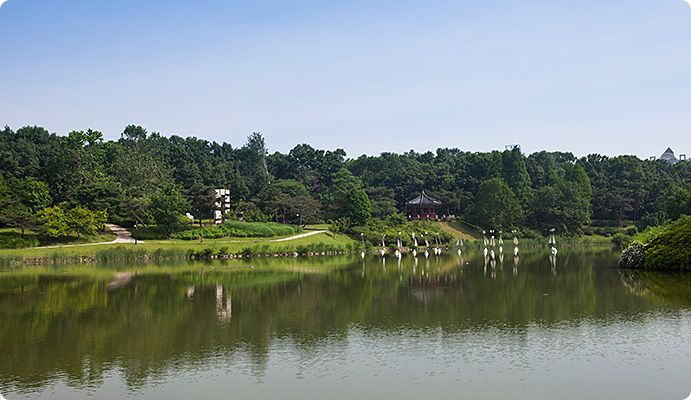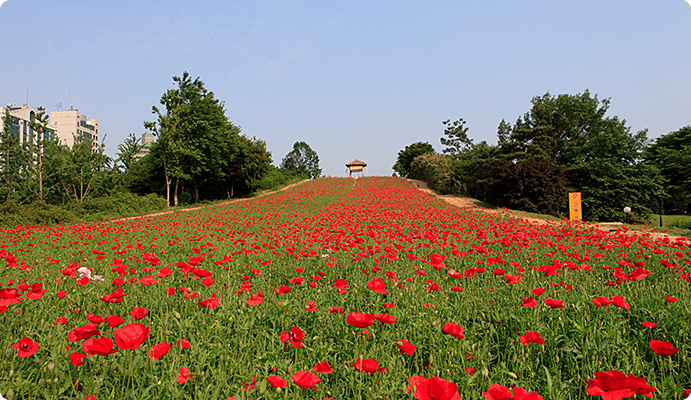Park Introduction
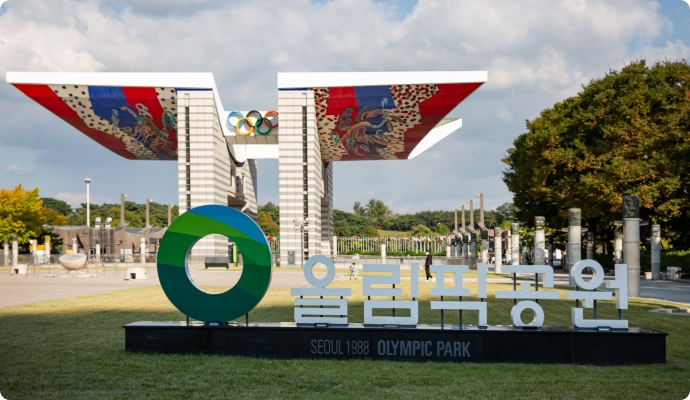
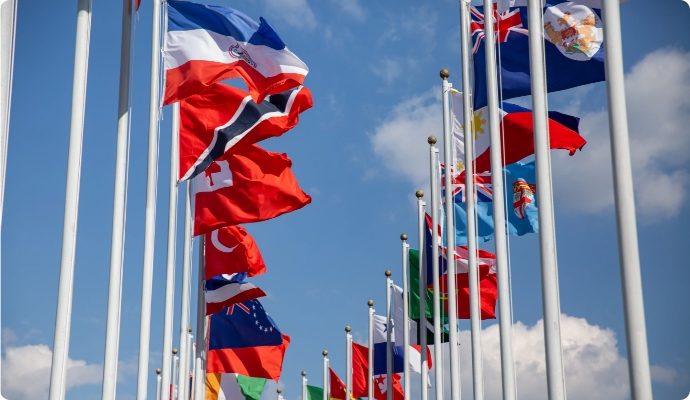
The Olympic Park, operated and managed by KSPO (Korea Sports Promotion Foundation), is a multi-complex that hosts sports, culture and leisure events in the spirit of 1988 Seoul Olympic Games. Scattered around the Olympic Park, you can see monuments commemorating the Olympics and outdoor sculptures where the spirit of the 1988 Seoul Olympics continues to breathe.
Situated around the relic of ancient Baekje, the Mongchon Fortress, are wide grass areas and the Mongchon Haeja (Artificial Moat), as well as several small and large outdoor squares including the Peace Square, which is well-arranged amidst a pleasant natural environment.
The Park also contains KSPO DOME (Olympic Gymnastics Arena), Ticketlink live Arena (Olympic Handball Stadium), Woori Art Hall (Olympic Weight Lifting Stadium), Olympic Hall (Muse Live), and the K-Art Hall that can hold events of various sizes. It can host any event whatsoever under a perfect ambience.
Especially, with the harmony between the 1.421 km² wide area of natural green
areas and the Olympic facility structures, the Olympic Park is situated in a convenient
urban location that is easily accessible by public transportation.
The venue is not only great for various competitions and concert events, but also
serves as an ideal location for commercial films and movies with its beautiful
background scenery.
The Olympic Park, which is operated and managed by KSPO, is a venue of civic
sports, culture, and leisure that has inherited and is expanding the ideology and
values of the 1988 Seoul Olympics.
Dreaming of the coexistence between nature and humans
The historic site in which the prehistoric civilization of the area and the splendid
Baekje culture flourished has transformed into an ecological park that promotes the
coexistence between nature and humans: The Olympic Park.
The Olympic Park construction project, which commenced in 1984 in preparation for
the 1986 Asian Games and the 1988 Seoul Olympic Games on a site of 1.421km²,
was completed in 1986. Having the Mongchon Fortress restored in the center and
six gymnasiums arranged in a semicircle, the Olympic Park has been formed as an
urban green space where the spirit of Hanseong Baekje era is still alive.
Including casual strollers, the regular members of sports classes and spectators for
various performances, the number of visitors increased to approx. 5.23million as of
2017(daily average 14,000), which proves the fact that the park has become a
preferred urban center for relaxation and recreation activities.
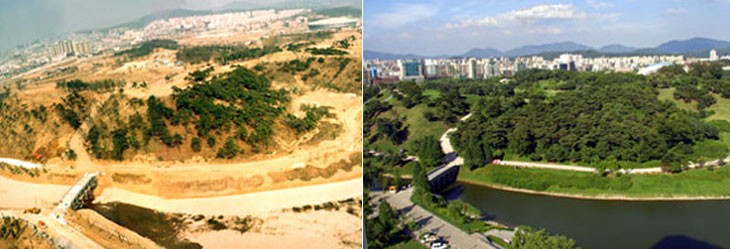
Improvements to the Management of the OlympicPark
- Basic maintenance of large-size Olympic facilities
- Management of artificial landscapes
- Adopting nature-friendly methods of management
- Avoiding the use of agricultural chemicals and fertilizers
- Restoring up the natural environment as habitat for wild plants and animals
- Improving environment-friendly techniques for high water quality
- Forming an ecological network consisting of Seongnae Stream, Mongchon
Moat, and the 88 Lake
- Developing the ecological parks and places for nature education
- Eco-friendly water quality process for the Mongchon Moat (April 2003)
- Recovery of the buffer-zone function for Sungnae Stream (April 2004)
- Installing an artificial island of plants in Mongchon moat (April 2004)
- Installing old hydraulic pumps for Han River and storing rainwater (April 2004)
- Setting up an observation deck and info posts (November - December 2004)
Ecological Park - combining nature and humans
To reach its current state, the Olympic Park has gone through several processes of
reformation. The previous management of the Olympic Park focused on maintaining
the status of the enormous structures and the park’s artificial landscaping.
This was mainly due to the shortage of plants and water network in the early period.
Because of this, it was not possible to deal with restoration of the ecosystem. Having
continued with this method of park maintenance for so long, we recognized the
importance of restoration and preservation in eco-friendly ways.
Our notion of maintenance changed to environment-friendly methods focusing on
creating ecological value from the park and accordingly, we commenced various
ecosystem restoration projects.
Seongnae-cheon (Seongnae Stream), with a thick layer of sediment, was out of
maintenance after the park construction. However, with the new eco-friendly
management project, this formerly abandoned place that was full of weeds has been
transformed into a rich ecological repository with various water plants such as
bulrushes.
It also offers natural water purification and a biotic habitat. Furthermore, the stream is
newly recognized as a rich swamp and a biotope as it connects the scenic
Mongchon Moat and the 88 Lake.
